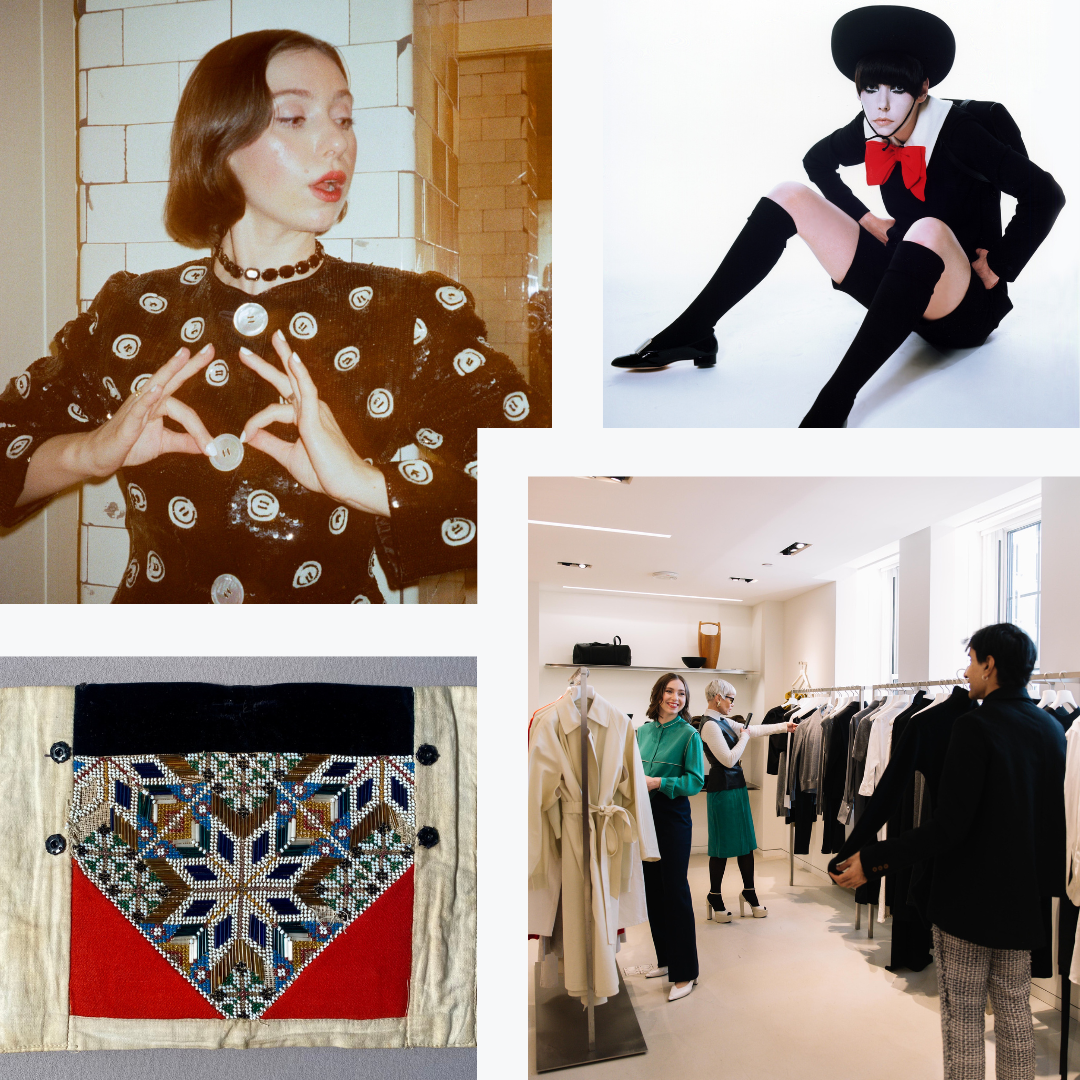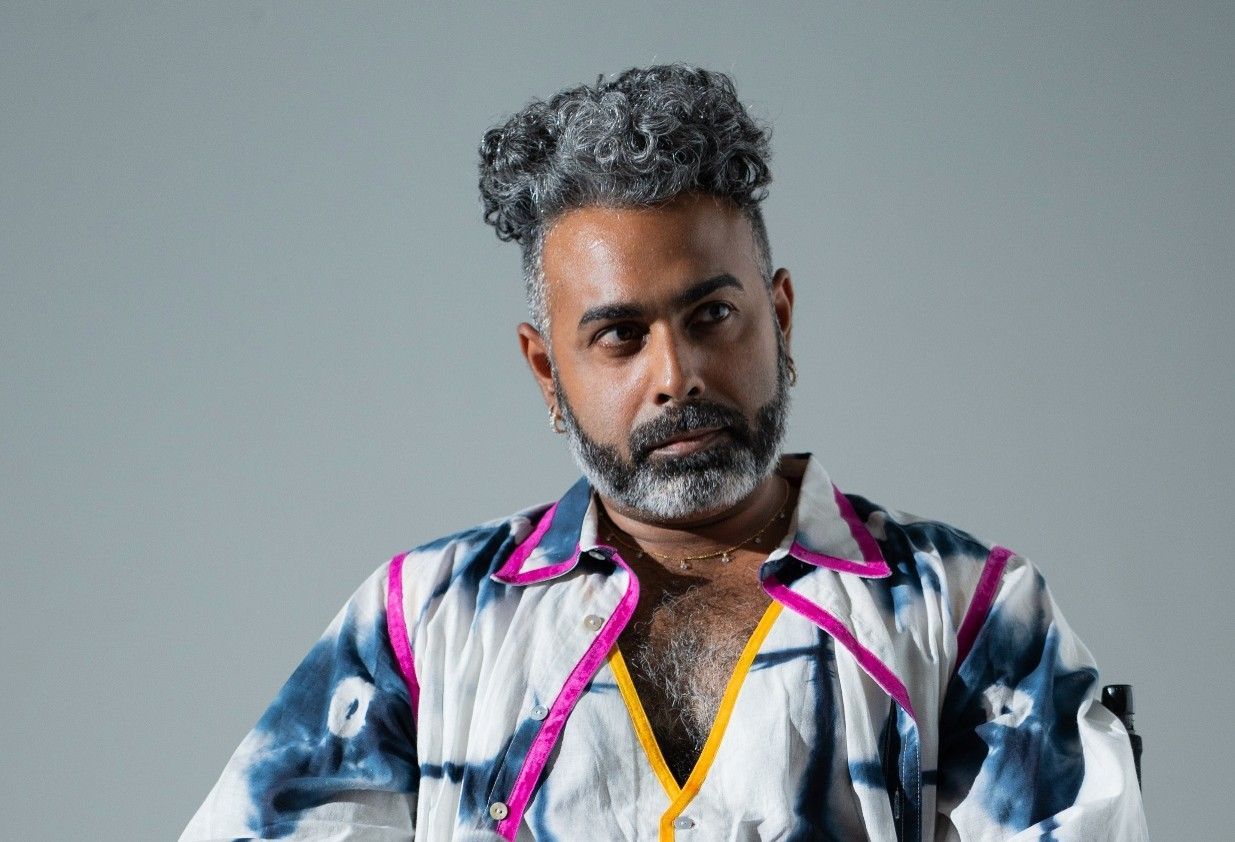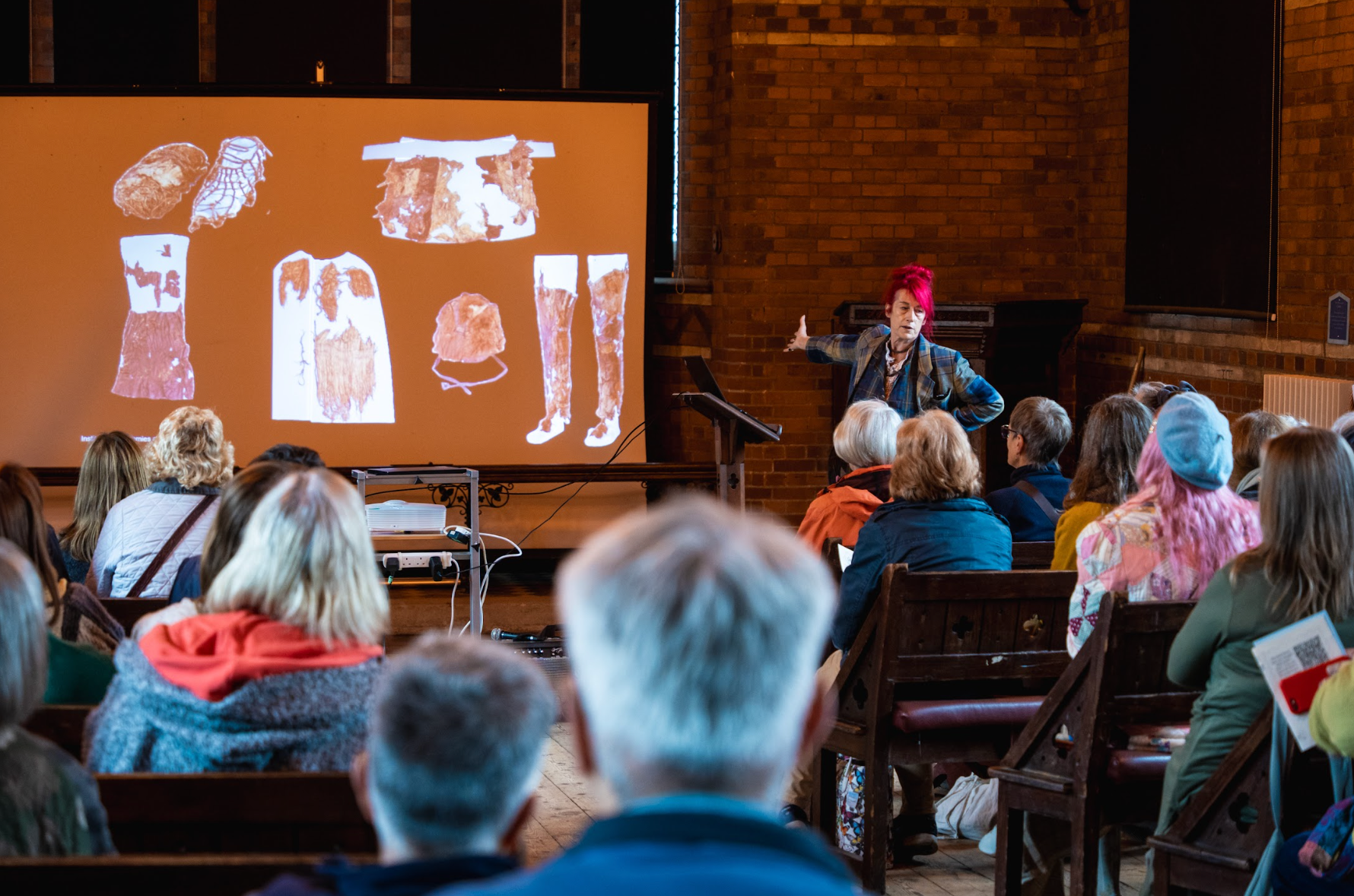Dialogues on Dress: Cara Green
This edition of Dialogues on Dress features Cara Green. A newly minted graduate, the stylist is entering the NYC sartorial scene with a bang, from assisting Kerry Taylor in their first auction in the United States to striding about the city in search of her client’s next ensemble.
The history of dress and the future of fashion act in dialogue, always interfacing to inform our present moment. The Costume Society of America’s diverse members exemplify this reality like no other; through the constant connections across time and disciplines they draw, our membership of costume curators, designers, artists, and so much more embody fashion’s ubiquitous presence - and dress’ daily power to teach us all something new.
We hope you will join us for CSA’s new Dialogues on Dress series, interviews now available monthly in our e-News and here on our website.
Interested in getting in touch? Email enews@costumesocietyamerica.com

Dialogues on Dress: Cara Green
This may be Cara Green’s first full year out of school, but it is far from her first foray into styling and the world of fashion. With six years under her belt at Bay Area-based The Style Systéme, a BA in Art History from UC Berkeley, and an MA in Fashion & Textile Studies from FIT, Cara is beginning her postgrad time as a Stylist at iconic luxury retailer Bergdorf Goodman with confident footing. She knows her styling tenants and the nuances they necessitate: a strong POV and decisive eye, matched by the ability to put your personal tastes and preferences aside in service of the client. She knows her fashion facts: an undergraduate thesis on Sonia Delaunay (as well as exhibition review in CSA’s Dress), master's thesis on the Norwegian bunad, and the continual education New York City has to offer and which she eagerly seeks out via museum talks, performances, and more. Simply put, Cara is entering the sartorial scene with a bang, from assisting Kerry Taylor in their first auction in the United States, Fearless Fashion: The Peggy Moffitt Collection, to striding about the city in search of her client’s next ensemble.
Read our conversation below. This interview has been edited and condensed for clarity.
___________________________________________________
Please paint a brief sketch of your background, personal & professional. Does a particular memory stand out as foundational to the work you do today, or how did you decide to pursue your current path?
I was born and raised in Santa Rosa, California, just an hour north of San Francisco. I always loved going into the city, and have always had this inherent attraction to cosmopolitan places with a strong character and cultural presence. So, I am really embracing life in New York City right now. Growing up, dance was my main love – I competitively tap danced until I was 18. When I think about the root of my interest in fashion, dance and performance is a big part of it. I have always loved the practice and art of dressing up, and I think it just comes naturally to some people. I have consistently followed this innate attraction in my personal and professional life. I was actually an Applied Math-turned-Art History major with a minor in Dance and Performance Studies in college at UC Berkeley. I worked at a vintage store during this time, Muse the Shop, and through that got connected with a Bay Area-based personal stylist, Kelly Sparks. I have worked with her for the past six years with The Style Système, a personal styling business. We work together bicoastally now, ever since I moved to New York City for the Fashion Institute of Technology’s master’s program in Fashion and Textile Studies: History, Theory, Museum Practice, which I graduated from last year.
~Thinking of personal style as a singular aesthetic can be rather limiting and confining. If you allow yourself to widen your scope and authentically embrace every aspect of your identity, the process of getting dressed and expressing yourself may vary from day to day [...] Personal style is singular, but never static.~
I would love to hear about your personal relationship to style and how that’s evolved over the years. What role has fashion played in developing your sense of identity?
I really began to pay more attention to my clothes and treat style as a creative outlet in high school. I was very fortunate to go to a school that was supportive of stylistic self-expression. We had a prominent arts magnet program, and I was in the dance company. I began to think a lot about how one’s inward mood and identity is reflected in one’s personal style, and also how one’s individuality through style is expressed outwardly to others as a communication tool. Working as a personal stylist has led me to think more practically and systematically about getting dressed and building a wardrobe, whereas my education in art history and fashion studies has taught me to think more theoretically and critically about fashion and style. I am coming to learn that personal style comes from embracing what you are attracted to, trusting your instincts, and having confidence while doing it.
I think there is a lot of pressure right now to hone a very particular style then stick to a singular aesthetic or look. What are your thoughts on that?
I think seeing other people on the street or on social media with a distinct “look” can be very inspiring. In practice, however, discovering your own unique style does not happen overnight. Additionally, style is ever-changing and evolving according to who you are becoming. So thinking of personal style as a singular aesthetic can be rather limiting and confining. If you allow yourself to widen your scope and authentically embrace every aspect of your identity, the process of getting dressed and expressing yourself may vary from day to day. Some days you may stick to your tried-and-true ensembles, and on other days something particularly inspiring may strike a chord and influence you to build something new around a specific piece. Personal style is singular, but never static.
What does a typical day of work look like for you? And outside of work, where are some of your favorite places in New York City to go for inspiration?
Navigating my career as a fashion historian and stylist post-grad has come with a mix of jobs and projects, which speaks to the interdisciplinary nature of fashion as a cultural phenomenon, industry, and field of study. I currently work full-time at the iconic and singular luxury retailer Bergdorf Goodman, and I continue to do personal styling with Kelly Sparks and The Style Système. With the latter, a day can consist of anything from closet consultations, organizing and editing a client’s wardrobe, to a full day of personal shopping and making an edited selection of clothing for a specific client.
I have also spent time this past year working with Kerry Taylor Auctions cataloguing a private haute couture collection and more recently assisting in their first auction in the United States, Fearless Fashion: The Peggy Moffitt Collection. Peggy Moffitt’s personal collection, spanning six decades and rich with Rudi Gernreich designs, amounted to more than double the auction’s high estimate, and the Japanese schoolboy ensemble by Rudi Gernreich from his Fall 1967 collection achieved a world record price for Rudi Gernreich, selling for $93,750! Cora Harrington (a previous Dialogues on Dress interviewee) and I actually worked together with Kerry Taylor one day this past fall.
Outside of work, I stay inspired by everything New York City has to offer, from the art museums, film screenings, and performances to the libraries, parks and restaurants. I love taking dance classes and going to book and museum talks. I recently attended a lecture at the Guggenheim Museum on the occasion of their Orphism exhibition, which was exciting for me because I wrote my undergraduate Honors thesis on Sonia Delaunay. My recently published master’s thesis surrounds traditional Norwegian festive dress, termed bunad, and has inspired me to take Norwegian language classes at the Scandinavian House. Even though this is my first full year out of school, there is endless opportunity for continued learning in this extraordinary city.
Does vintage or second-hand play a role in sourcing and styling?
Definitely. Vintage is something I’m always looking out for, and I primarily shop second-hand myself these days. You can find some of the most precious and unique pieces to add to your collection on the hunt in vintage stores or second-hand websites. Recently, I scored a 1986 Bill Blass sequined evening jacket with trompe l'oeil buttons for only $40 on Poshmark. I was inspired to acquire this jacket after seeing one in a client’s private collection. It definitely helps to have something specific in mind when shopping for vintage clothing online; you need to have the right search terms unless you're prepared to scroll for hours. For this reason, I often only source second-hand for clients when there is a specific type of piece we are looking for.
What top traits, approaches, or skills make for a successful stylist? Do you have a work philosophy?
I believe stylists need a discerning eye and a strong point of view. They can’t be afraid to be honest, and they must be capable of putting their own personal taste aside in service of amplifying and elevating their client’s own individual style. So there is a balance; the client trusts you and has clearly hired you for your opinion, but you can’t be overly subjective. I have learned so much about personal styling from Kelly. We have developed such a great collaborative partnership and friendship over the years. The Style Système is literally a system designed to empower people to build their wardrobe wisely; it is a personal styling method and mindset built on the iconic elements of contemporary fashion, and it is essentially how we approach any closet.
~My grandmother passed down a Norwegian bunad to me that was made by her mother in Norway about 120 years ago. I was so inspired by inheriting this ensemble that I wrote my masters thesis on its origins and contemporary uses, which took me on a whole journey. ~
Favorite piece you’ve styled, or own yourself?
A significant amount of pieces in my wardrobe at the moment are pre-loved by my grandmother Dorothy. These are easily some of my favorites. She had, and still has, impeccable taste, and took great care of everything in her closet. One piece that often comes to mind is a long Dior Irish tweed coat with strong shoulders and a fabulous collar—especially when popped—that I wear during the coldest months in New York. Simply put, it is the perfect winter coat.
My grandmother passed down a Norwegian bunad to me that was made by her mother in Norway about 120 years ago. I was so inspired by inheriting this ensemble that I wrote my masters thesis on its origins and contemporary uses, which took me on a whole journey. With the support of a research grant from the Decorative Arts Trust, I traveled to Norway in 2023 to conduct research at several museums and connect with extended relatives, many of whom have and wear their own bunads. Today, there are over 500 distinct styles of bunad in use. While I was translating an article and researching the bunad of the Nordfjord region where my great-grandmother grew up, I learned that my first cousin twice removed served on the committee in the 1940s that researched and catalogued the folk dress of the region in order to develop their symbolic regional dress. So, perhaps the interest in fashion history and personal style runs in the family!
Over the next five years, how do you see your work evolving? Tell me about a dream project, a vision, or general directional mood...
The past, present, and future are always converging in fashion, making it such a diverse field of study and career path. I have been thinking a lot about temporal and stylistic synchronicities within fashion studies, which is something I want to expand upon in the future. I would absolutely love to engage in more museum curatorial work, which was the focus of my master’s degree at FIT. The exhibition my cohort worked on was Elizabeth Hawes: Along Her Own Lines. I was the Curatorial Advisor, and I found organizing the exhibition incredibly fulfilling. Curating a cohesive exhibition is similar to piecing together a complete wardrobe. Both responsibilities overlap by telling stories through dress, which is also not unlike a dance performance where storytelling involves abstract and creative thinking. My interests have always been at the intersection of fashion, art, and performance, and I hope that will always be the case.
What does the future of fashion look like to you?
Fashion can have such varied definitions depending on context, so to simplify this complex question, a definition I like to use for fashion is: changing styles of dress. The word change is key because it means change at any rate, slow or fast. And encompasses all styles of dress adopted by anyone from any time or place are included. Fashion is everywhere. Therefore, I see the future of fashion as being more diverse, inclusive, and individualized. I am a big proponent of individual and instinctual style over following trends of the moment, so I hope the future of fashion leans into more individuality, intention, and creativity.
___________________________________________________
Thank you so much to Cara Green for having this conversation with me! You can find her at @caragreenn, read her exhibition review in CSA’s Dress here, and check out her master’s thesis on Norwegian bunads here!
~Madison Brito Taylor
Images clockwise from upper left:
Cara Green dressed in a sequined evening jacket designed by Bill Blass, 1986. Photograph by Stella Thorsen, May 2025.
Peggy Moffitt dressed in the Japanese schoolboy ensemble designed by Rudi Gernreich, Fall 1967. Photograph by William Claxton.
Cara Green & Kelly Sparks shopping for clients in New York City. Photograph by Marc Levin, March 2023.
Agnes Rugtiv, bringeklut (breast cloth), Sandane, Norway, c. 1905, wool, cotton, glass. Private collection. Photograph by Cara Green.
Image header:
Cara Green dressed in her grandmother’s Dior Irish tweed coat. Photograph by Rowell Perez, February 2025.



